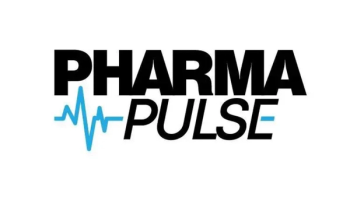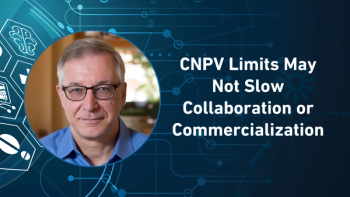Key Takeaways
- Exceptional CX significantly boosts engagement with healthcare professionals and consumers, leading to increased prescriptions, better market penetration, and improved health outcomes.
- Pharma companies are leveraging AI-driven omnichannel platforms to unify customer data, personalize interactions, and meet rising expectations across direct-to-consumer and direct-to-patient models.
- Unified platforms powered by AI enable pharma companies to deliver seamless, tailored experiences across touchpoints—powering both operational efficiency and compliance.
Across numerous industries, the customer experience (CX) is considered more important than ever. In fact, 96% of the CX leaders surveyed by Nextiva said that corporate executives now see the customer experience as a key driver of business outcomes.1
In the pharma sector specifically, businesses are turning their attention to creating new kinds of customer experiences as well—and with good reason. “Healthcare professionals (HCPs) are twice as inclined to interact with a pharmaceutical company that delivers an exceptional engagement experience compared to one offering a subpar one,” a study from the University of Warwick found.
In fact, actions tailored to each customer “have a fourfold greater influence, resulting in twice as many prescriptions,” the study found. Also, enhanced customer experience addresses unmet needs up to 30% more than poor CX.
These days, pharma companies are increasingly focusing on another set of customers: the consumers of medications, thanks to the growing direct-to-consumer (DTC) and direct-to-patient (DTP) models. This evolution requires new, personalized ways of interacting with individuals across numerous channels.
Pharma companies need to create new kinds of experiences that introduce consumers to medications; help them understand how they work; address concerns about contraindications; answer a wide array of questions, and more. Just how effective brands are at achieving all this will be a crucial factor in determining their market penetration.
Even more importantly, it will help determine how many people learn about and access drugs that can improve their health and even save their lives. As PwC notes,2 “For pharma, improving the customer experience across stakeholders—including patients, caregivers, healthcare providers (HCP), and payers—can benefit both the healthcare ecosystem and the business outcome.”
What does it take to create the best possible customer experiences for everyone involved? “Standing out requires focus on delivering easy, purposeful, personalized and adaptable interactions at every touchpoint,” PwC points out. That's true. But there's also more. It requires a technological revolution.
Today’s consumers have high expectations of businesses. I explain to executives that customers no longer compare businesses just to their competitors. They compare businesses to the best experiences they’ve had.
They want interactions with brands to be smooth, quick, respectful, and positive. They want to feel that the brand “knows” them. They don’t want to have to repeat information or ask the same questions over and over. That has previously been a tough challenge for organizations to overcome, given that they interact and converse with customers across so many different platforms.
They haven’t always collected all those disparate sources of information into a single, comprehensive record. In a report3 titled “The Omnichannel Reality in the Pharmaceutical Industry,” Ipsos explained how important it is to embrace an era in which this is done. “Companies are investing in bringing together all channels into one easy-to-use communication platform—integrating voice, email, webchat, and other tools into one omnichannel contact centre software linked to CRM databases,” the report said.
AI plays an essential role in making this work. A unified customer experience management platform (UCXM) powered by AI can pull together information from any and all platforms. It can instantly provide summaries and highlight the issues and pain points a customer needs addressed. It can recommend steps based on what has worked for other customers in the past. Using natural language processing, it can empower chatbots to handle certain inquiries and interactions. It can alert human representatives when they need to jump in, and it can do all of this while ensuring both privacy and compliance with laws (at both the federal and state levels).
When it comes to reaching individuals directly, there are certain limitations to how much data can be unified, of course. A study4 in the Journal of Marketing Management quoted the head of e-commerce for a pharma brand discussing this. “The consumer goes to the pharmacy and buys a product, which means we do not know how old the customer is, or what he does for a living, and therefore we cannot address him in a personalized way in the purchase stage.” Part of the solution is to share whichever data points may be shared, helping to narrow that gap somewhat, the authors explain.
But already, pharma companies have a great deal of information pouring in about consumers, HCPs, and other customers. The goal now is to harness that information to deliver top-notch customer experiences at every touchpoint.
With the help of new technology, pharma can enter a new era of CX -- ultimately delivering excellent customer experiences and better health outcomes.
About the Author
Tomas Gorny is co-founder and CEO of Nextiva.
References
1. The Leader’s Guide to CX Trends in 2025. Nextiva. 2025. https://www.nextiva.com/trends/customer-experience
2. Customer experience drives pharma’s long-term viability. PWC. https://www.pwc.com/us/en/industries/health-industries/library/pharma-customer-engagement.html
3. The omnichannel reality in the Pharmaceutical industry. Ipsos. September 4, 2023. https://www.ipsos.com/en-us/omnichannel-reality-pharmaceutical-industry
4. Weippert, M. The scope and intensity of personalized omnichannel customer journeys: a conceptualization integrating experts’ and consumers’ perspectives. Journal of Marketing Management, 40(11–12), 877–909. https://doi.org/10.1080/0267257X.2024.2388088






